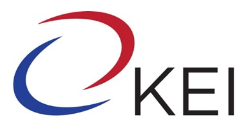1985 Posts located
Asia
1985 Posts located
Defense industrial cooperation between the United States and South Korea is deeply rooted in the bilateral security alliance and has evolved over time. The United States has prioritized allied cooperation…
December 9, 2024
On September 15, 2021, Australia, the United Kingdom, and the United States announced the formation of AUKUS, a trilateral security partnership intended to support Australia’s acquisition of nuclear-powered submarines. A…
December 9, 2024
KEI’s 2024 Report on American Attitudes Toward the Korean Peninsula summarizes results from a survey commissioned by KEI and conducted by YouGov from September 3rd to September 10th, 2024. The…
October 10, 2024
In 2010, a group of Asian countries made major strides toward economic integration with the launch of the Chang Mai Initiative Multilateralization. This currency swap arrangement has had a major…
April 21, 2016
With the recent season finale of The Walking Dead and the broadcast of his visit to South Korea with talk show host Conan O'Brien this past weekend, we look back at our…
April 14, 2016
This week our guest is noted scholar and North Korea watcher Dr. Stephan Haggard. Dr. Haggard is a Professor of Korea-Pacific Studies and director of the Korea-Pacific Program at the…
April 8, 2016
At KEI, we mainly focus on the relationship between the United States and South Korea, and their approaches toward North Korea. This week, we're taking a different look at the…
March 30, 2016
Last Thursday, Korean chipmaker SK Hynix made history by developing a 10-nanometer (nm) transistor process for 16 GB Double Data Rate 5 (DDR5), the latest iteration of dynamic random-access memory (DRAM) chips. By allowing for greater memory capacity and processing speeds for the corresponding central processing units (CPUs) that are used for cloud computation, this…
September 5, 2024
“You can either buy clothes or buy pictures.” (Gertrude Stein) The air will be filled with a different kind of buzz in Seoul this week as it hosts the third annual international art fair, Frieze Seoul. Over 110 leading art galleries worldwide will assemble for four days at the COEX Convention and Exhibition Center in…
September 5, 2024
The public sector financed 76 percent of healthcare in OECD countries in 2021 using compulsory health insurance and government programs (Figure 1, Panel A). Korea is an outlier in this regard, as only 62.3 percent of its health expenditures were covered through mandatory financing schemes. The low share of mandatory financing in Korea was offset…
September 4, 2024
The overwhelming majority of refugees who flee North Korea are generally those who live in border areas adjacent to China and do not have prominent government or economic positions. Few are from Pyongyang because it is very difficult for citizens to travel within the country unless police and internal security officials approve the travel. Meanwhile,…
